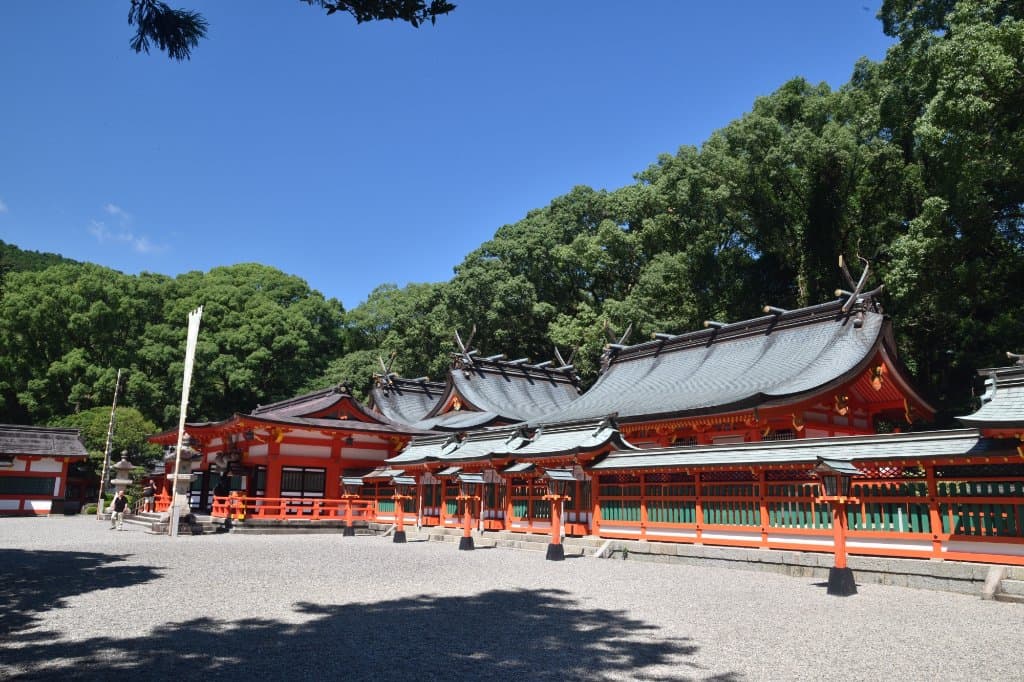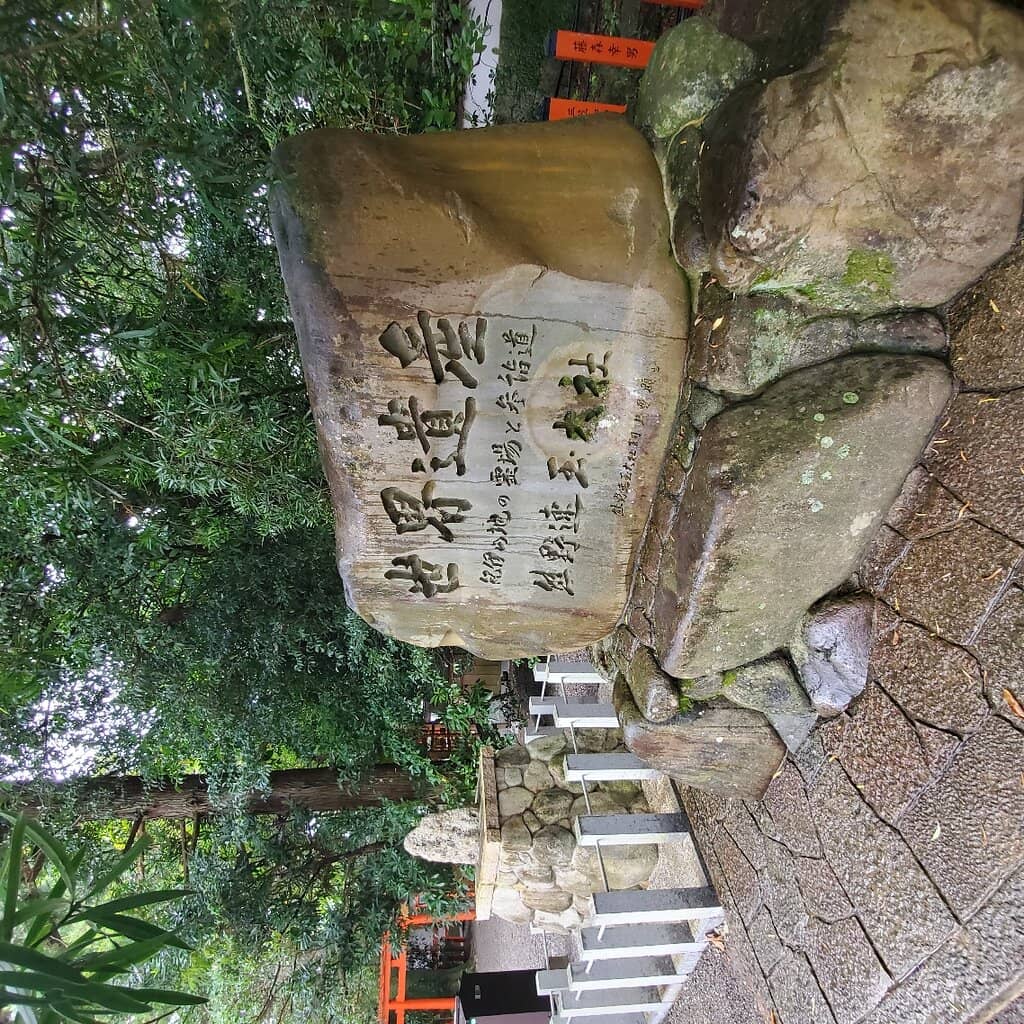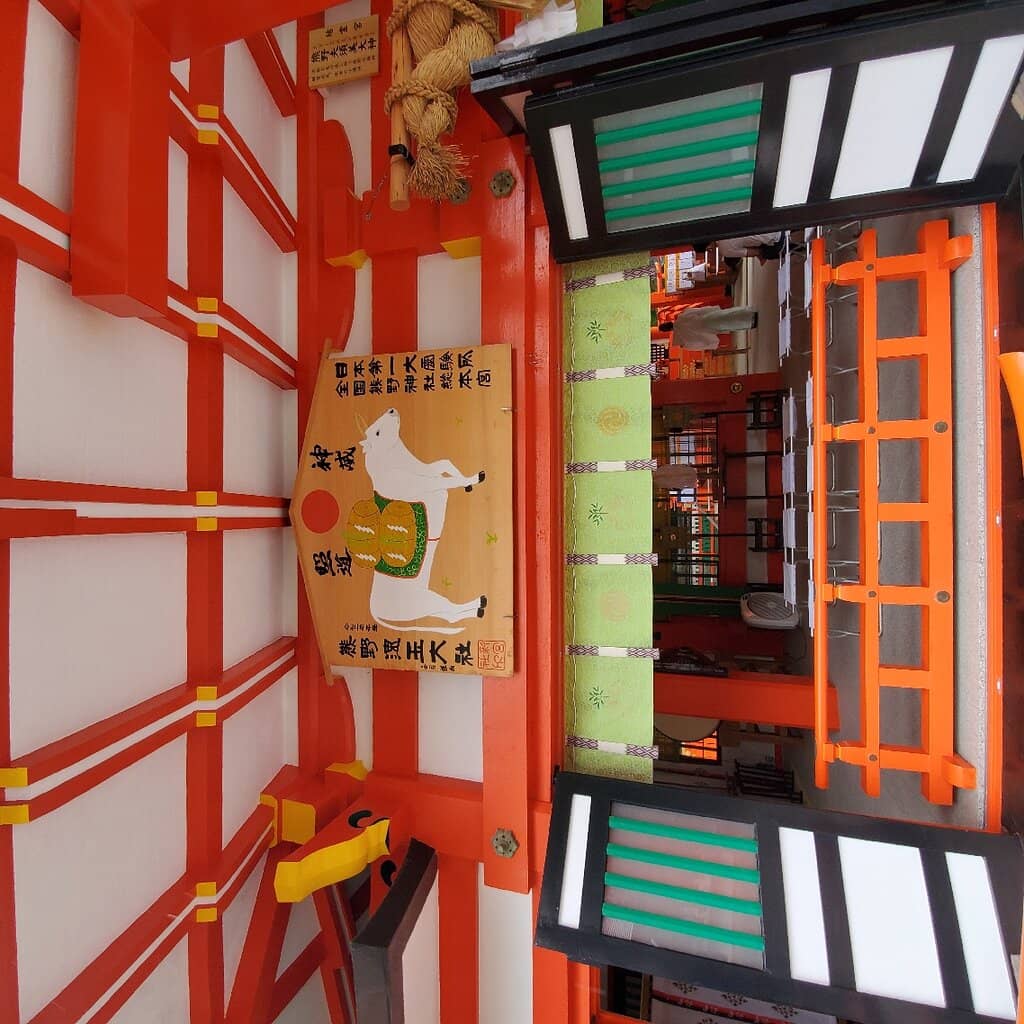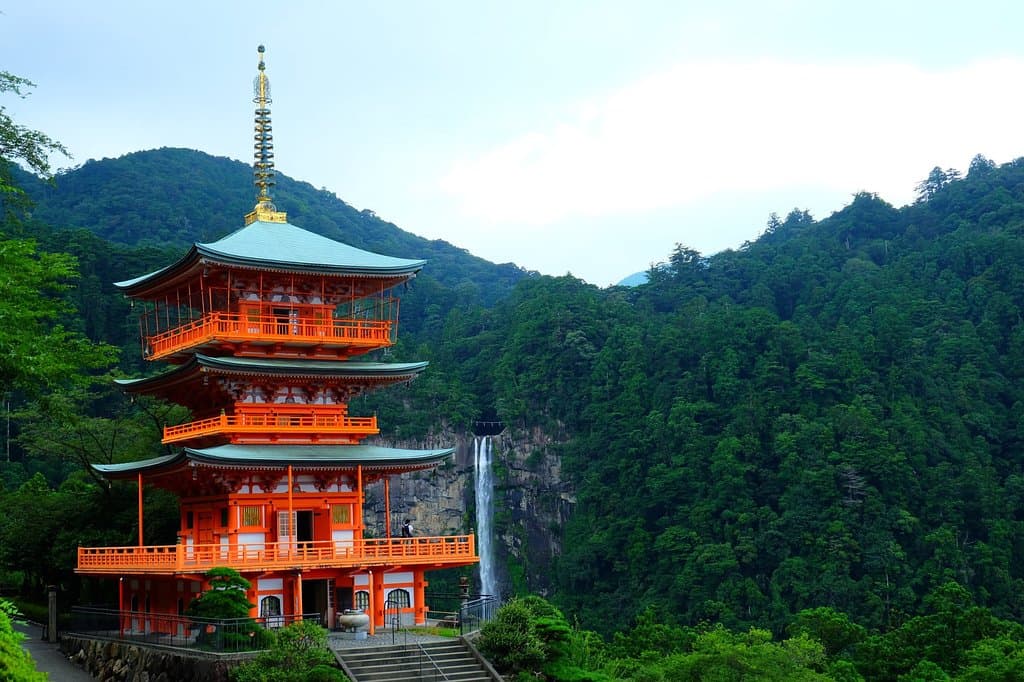
Kumano Hayatama Taisha
A serene Shinto shrine and vital pilgrimage site on the Kumano Kodo, known for its ancient Sacred Nagi tree and tranquil riverside setting.

Highlights
Must-see attractions

Social
From TikTok & Reddit
Best Time
Quieter atmosphere

Kumano Hayatama Taisha
Best Time
Quieter atmosphere

Highlights
Must-see attractions
A serene Shinto shrine and vital pilgrimage site on the Kumano Kodo, known for its ancient Sacred Nagi tree and tranquil riverside setting.
"A beautiful shrine breathed at the foot of the mountains. Definitely worth the visit if you're in Shingu!"

🚶 Walk from Shingu Station
It's a pleasant walk from Shingu Station to the shrine, taking about 15-20 minutes. :athletic_shoe:
✨ Seek Spiritual Energy
Many visitors feel a powerful spiritual energy here, making it a great spot for reflection. :sparkles:

Highlights
Discover the most iconic attractions and experiences

The Main Shrine Buildings
Main complex
Admire the striking architecture of this important Shinto shrine, a key stop on the Kumano pilgrimage.

Sacred Nagi Tree
Within the shrine grounds
Stand in awe of the ancient Nagi tree, said to be over 1000 years old and a witness to countless pilgrimages.

Kumano River Views
Near the shrine
Enjoy picturesque views of the Kumano River, which flows near the shrine and offers a tranquil backdrop.
Plans like a pro.
Thinks like you
Planning Your Visit
Timing Your Visit
Getting There & Around
Best Times
Insider Tips
from TikTok, Instagram & Reddit
🚶 Walk from Shingu Station
It's a pleasant walk from Shingu Station to the shrine, taking about 15-20 minutes. :athletic_shoe:
✨ Seek Spiritual Energy
Many visitors feel a powerful spiritual energy here, making it a great spot for reflection. :sparkles:
📅 Check Festival Dates
The '御船祭' (Ofune Matsuri) in October is a unique local festival. :calendar:
🌳 Admire the Ancient Tree
Don't miss the ancient Sacred Nagi tree, a truly impressive sight. :evergreen_tree:
Tips
from all over the internet
🚶 Walk from Shingu Station
It's a pleasant walk from Shingu Station to the shrine, taking about 15-20 minutes. :athletic_shoe:
✨ Seek Spiritual Energy
Many visitors feel a powerful spiritual energy here, making it a great spot for reflection. :sparkles:
📅 Check Festival Dates
The '御船祭' (Ofune Matsuri) in October is a unique local festival. :calendar:
🌳 Admire the Ancient Tree
Don't miss the ancient Sacred Nagi tree, a truly impressive sight. :evergreen_tree:
What Travellers Say
Reviews Summary
Kumano Hayatama Taisha is a beautiful and accessible Shinto shrine, praised for its peaceful atmosphere and spiritual significance, especially its ancient Sacred Nagi tree. While some find it smaller than other major shrines, its convenience and serene ambiance make it a worthwhile stop, particularly on weekdays.
"One of the Kumano Sanzan (3 Grand Shrines of Kumano), it is the smallest but yet most accessible which is near to a railway station. The shrine is quite quiet on weekdays, and it does not have much to see other than the building itself. Would be a good start for the 3 Shrines Journey"
Eric Cheng
"A beautiful shrine breathed at the foot of the mountains. Definitely worth the visit if you're in Shingu!"
Erica “EriMin” McCord
"Felt there was nothing extremely special about the Taisha. Conveniently beside another attraction, the shopping alley. But worth skipping even if you are passing by via car."
Kelvin Lee
What People Like
What People Dislike
Frequently Asked Questions
🚇 🗺️ Getting There
Kumano Hayatama Taisha is a short walk from Shingu Station, approximately 15-20 minutes. You can also take a local bus. Some visitors mention that while the walk is nice, shops might be closed if you arrive late.
Yes, Kumano Hayatama Taisha is one of the three grand shrines of Kumano and a significant site on the Kumano Kodo pilgrimage routes.
While boat cruises on the Kumano River are available and can be a scenic way to approach Shingu, they may not always dock directly at the shrine. Check local schedules for options like the Kumano Boat River Cruise.
Travel between the three shrines (Hayatama Taisha, Hongu Taisha, and Nachi Taisha) can involve a combination of buses, trains, and sometimes boat services. Planning your route in advance is recommended.
Yes, there are parking facilities available for visitors. However, if you are arriving by train, walking from Shingu Station is a popular and convenient option.
🎫 🎫 Tickets & Entry
Entry to the main grounds of Kumano Hayatama Taisha is generally free. There might be fees for specific inner areas or special exhibitions, but the core shrine experience is accessible without a ticket.
The shrine grounds are typically open from early morning until late afternoon or early evening. It's advisable to check the official website or local information for exact hours, as they can vary seasonally.
Yes, you can visit on weekends, but expect more visitors compared to weekdays. Weekends are popular for local visits and day-trippers.
No advance booking is usually required for general entry to Kumano Hayatama Taisha, as it's a public shrine. Special events or guided tours might require reservations.
Yes, the shrine hosts events like the '御船祭' (Ofune Matsuri) on October 16th annually, which is a significant local festival.
📸 📸 Photography
Photography is generally allowed in most outdoor areas of Kumano Hayatama Taisha. However, always be respectful and check for any signs prohibiting photos inside specific buildings or sacred areas.
The main shrine buildings, the ancient Sacred Nagi tree, and the views of the Kumano River are popular subjects. The torii gates also offer classic shrine photography opportunities.
Drone usage is typically restricted at religious sites and in populated areas due to privacy and safety concerns. It's best to assume drones are not permitted unless explicitly stated otherwise.
Early morning or late afternoon can offer softer light and fewer crowds, making for more atmospheric photos. Weekday mornings are ideal for capturing the shrine's tranquility.
While Hayatama Taisha is a destination, the surrounding area and the Kumano River offer scenic backdrops that connect to the pilgrimage experience.
🎫 ⛩️ Onsite Experience
You can admire the shrine's architecture, visit the ancient Sacred Nagi tree, and enjoy the peaceful atmosphere. It's a key spiritual site for pilgrims and visitors alike.
A visit to Kumano Hayatama Taisha can take anywhere from 30 minutes to an hour, depending on how much time you spend exploring the grounds and soaking in the atmosphere.
The main shrine area is relatively flat and accessible. However, some parts might have stairs or uneven surfaces, so it's good to be aware.
It is one of the three Grand Shrines of Kumano, holding immense spiritual importance as a destination for pilgrims on the Kumano Kodo. It's associated with the deity Susanoo-no-Mikoto.
Yes, there is a shopping alley nearby, offering souvenirs and local goods. However, some reviews mention that many shops might be closed if you visit later in the day or on certain days.
For Different Travelers
Tailored advice for your travel style
👨👩👧 Families with Kids
While the shrine itself might not have dedicated play areas, the serene atmosphere and the proximity to the Kumano River provide opportunities for gentle exploration. Consider a short walk along the riverbanks or a visit to the nearby shopping alley for souvenirs. The overall experience is more about quiet contemplation and cultural appreciation than high-energy activities.
🚶 Solo Travelers & Pilgrims
Many solo visitors appreciate the peaceful atmosphere on weekdays, allowing for a more introspective experience. The shrine is a key point on the Kumano Kodo, and arriving here can be a moment of accomplishment and spiritual renewal. The proximity to Shingu Station also makes it an accessible and convenient part of a larger journey.
📸 Photography Enthusiasts
For the best light and fewer distractions, aim for weekday mornings. The interplay of light and shadow on the shrine structures, especially with the surrounding greenery, can create stunning images. Remember to be respectful of worshippers and any restricted areas when composing your shots.
Deep Dives
In-depth insights and expert knowledge
The Kumano Kodo Pilgrimage
Many travelers choose to hike sections of the Kumano Kodo, with routes leading to or from Hayatama Taisha. The shrine itself serves as a destination and a starting point for further exploration. The experience of walking these paths is often described as deeply spiritual and physically rewarding, offering a unique connection to Japan's cultural heritage.
While the Kumano Kodo is extensive, visiting Hayatama Taisha provides a tangible link to this tradition. It's a place where you can feel the echoes of past pilgrims and appreciate the enduring significance of these sacred routes.
Spiritual Significance and Local Beliefs
Visitors often report feeling a powerful spiritual energy upon arriving at the shrine. This sense of tranquility and connection is a common theme in reviews and social media posts. The ancient Sacred Nagi tree, with its thousand-year history, is a focal point for many, symbolizing longevity and resilience.
Beyond the main shrine, the surrounding woodland and the river contribute to the shrine's serene and sacred ambiance. It's a place where one can reflect on life, seek blessings, and experience a deeper connection to nature and spirituality.
Exploring Shingu City
Shingu offers more than just the shrine. Nearby attractions include the Kamikura Shrine, perched on a steep hillside with impressive rock formations, and the Shingu Castle Ruins. For a unique perspective, consider the Kumano Boat River Cruise, which offers scenic views of the river and the surrounding landscape.
While the shrine itself is relatively compact, exploring Shingu allows for a richer understanding of the region's history and culture. The town provides a good base for those venturing into the wider Kumano area, offering a blend of natural beauty and historical sites.




Social
from TikTok, Instagram & Reddit